 |
|
|
Biographical Notes |
||
|
Wynn Bullock (April 18, 1902 – November, 16, 1975) was born in Chicago, Illinois, and raised in South Pasadena, California.
As a boy, his passions were singing and athletics (football, baseball, swimming, and tennis). After high school graduation,
he moved to New York to pursue a musical career and was hired as a chorus member in Irving Berlin’s
During the mid-1920s, he furthered his career in Europe, studying voice and giving concerts in France, Germany, and Italy. While living in Paris, he became fascinated with the work of the Impressionists and post-Impressionists. He then discovered the work of Man Ray and Lazlo Moholy-Nagy and experienced an immediate affinity with photography, not only as an art form uniquely based on light, but also as a vehicle through which he could more creatively engage with the world. He bought his first camera and began taking pictures.
During the Great Depression of the early 1930s, Wynn stopped his European travels and settled in West Virginia to manage his first wife’s
family business interests. He stopped singing professionally, completed some pre-law courses at the state university,
From 1938 to 1940, Wynn became deeply involved in exploring alternative processes such as solarization and bas relief. After graduation from Art Center, his experimental work was exhibited in one of L.A. County Museum’s early solo photographic exhibitions. During the early 40s, he worked as a commercial photographer and then enlisted in the Army. Released from the military to photograph for the aircraft industry, he was first employed at Lockheed and then headed the photographic department of Connors-Joyce until the end of the war. Remarried, and with a new daughter, Wynn traveled throughout California from 1945 to 1946, producing and selling postcard pictures while co-owning a commercial photographic business in Santa Maria. He also worked on developing a way to control the line effect of solarization for which he later was awarded two patents. In 1946, he settled with his family in Monterey where he had obtained the photographic concession at the Fort Ord military base. He left the concession in 1959, but continued commercial free-lance work until 1968.
A major turning point in Wynn’s life as a creative photographer occurred in 1948 when he met Edward Weston. Inspired by the power and beauty of Weston’s prints, he began to In the mid-1950s, Wynn’s artistry came into the public spotlight when Edward Steichen chose two of his photographs to include in the 1955 “Family of Man” exhibition at the Museum of Modern Art. At the Corcoran Gallery in Washington, DC, his photograph “Let There Be Light,” was voted the most popular of the show. The second, “Child in Forest,” became one of the exhibition’s most memorable images. By the end of that decade, his work was being featured in many exhibitions and publications worldwide.
During the early 60s, Wynn departed from black and white imagery and produced a major body of work that he referred to as “Color Light Abstractions”. For him, these photographs represented an in-depth exploration of light, manifesting his belief that light is a great force at the heart of all being, “perhaps,” as he said, “the most profound truth in the universe.” Although he was tremendously excited about this work, it proved to be
In the mid-1960s, frustrated by the limitations of color printing technology, Wynn returned to making black and white photographs, continuing to expand his vision to create innovative images that reflected his deeply philosophical nature. Differentiating what he termed “reality”, the visible and the known, from “existence”, the underlying truth of things, he was ceaseless in his attempts to expand his own faculties of perception and understanding so he could come ever closer in his experiences to the essence of things. Finding the means to more fully evoke that essence was also a key part of his quest. Although he included several different alternative processes (extremely long time exposures, multiple images, up-side-down and negative printing) in his repertoire of techniques, each was always used in the service of symbolizing new ways of relating to and knowing the world. As he once said, “Searching is everything – going beyond what you know. And the test of the search is really in the things themselves, the things you In the early 70s, Wynn started on a new leg of his creative journey, one that he found completely absorbing and deeply satisfying but which was cut short by incurable cancer. Many of his photographs from that period reveal light emanating from within the heart of things, life glowing and pulsing with energy and vitality. Other photographs are of natural forms that depict or suggest universal human qualities, humanity “deeply embedded in” and re-united with nature. Throughout his career, Wynn was an active lecturer, workshop leader, and teacher, generously giving of himself to fellow seekers. As a master photographer, Wynn was one of five artists whose archives established the University of Arizona’s Center for Creative Photography. His work may also be found in the permanent collections of over 90 major institutions throughout the world as well as in numerous publications. As a person who asked the deepest questions about life and the universe and who used photography as a symbolic language to further as well as document his search for meaning, he left a legacy rich and vital in its power to inspire and transform.
Family:
Education:
Influences:
Some Noteworthy Accomplishments: Along with Ansel Adams, Harry Callahan, Aaron Siskind, and Frederick Sommer, he became part of the founding group of photographers whose archives established the Center for Creative Photography at the University of Arizona in 1975. Wynn taught advanced photography courses at the Institute of Design in Chicago during Aaron Siskind’s sabbatical and at San Francisco State College at the invitation of John Gutmann. He was a guest instructor for the Ansel Adams Yosemite Workshops. Throughout the 1960s and early 1970s, he lectured widely, led photographic workshops, and participated in many seminars and symposia on various topics and issues in photography. Photo credits, from top to bottom: Campbell Studios, NYC, 1923; F. Florian, date unknown; Todd Walker, 1967; Jack Fulton, 1974; Herman Wall, date unknown; Jim Hill, 1974. |
|
|
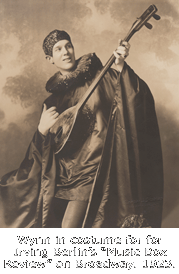 Music Box Revue. He occasionally sang the primary tenor role when headliner John Steele was unable to appear and then
was given a major role with the Music Box Review Road Company.
Music Box Revue. He occasionally sang the primary tenor role when headliner John Steele was unable to appear and then
was given a major role with the Music Box Review Road Company. 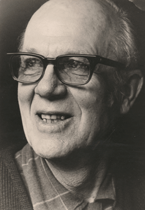 and continued to take photographs as a hobby. In 1938, Wynn moved his family back to Los Angeles and enrolled in law
school at the University of Southern California where his mother Georgia P. Bullock (California’s first woman jurist) had studied law. Completely dissatisfied after a few weeks, he left USC and became a student of photography at the nearby Art Center School.
and continued to take photographs as a hobby. In 1938, Wynn moved his family back to Los Angeles and enrolled in law
school at the University of Southern California where his mother Georgia P. Bullock (California’s first woman jurist) had studied law. Completely dissatisfied after a few weeks, he left USC and became a student of photography at the nearby Art Center School.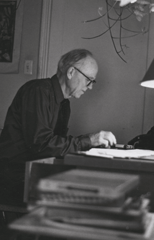 explore “straight” photography for himself. Throughout the decade of the 1950s, he devoted himself to developing his own vision, establishing deep, direct connections with nature. A lifelong learner, he also read widely in the areas of physics, general semantics, philosophy, psychology, eastern religion, and art. Studying the work of such people as Einstein, Korzybski, Whitehead, Russell, LaoTzu, and Klee, he kept evolving his own dynamic system of principles and concepts that both reflected and nurtured his creative journey.
explore “straight” photography for himself. Throughout the decade of the 1950s, he devoted himself to developing his own vision, establishing deep, direct connections with nature. A lifelong learner, he also read widely in the areas of physics, general semantics, philosophy, psychology, eastern religion, and art. Studying the work of such people as Einstein, Korzybski, Whitehead, Russell, LaoTzu, and Klee, he kept evolving his own dynamic system of principles and concepts that both reflected and nurtured his creative journey.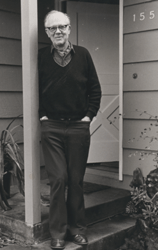 ahead of its time in terms of available resources to reproduce it, and it remained largely unknown for almost 50 years. In 2008, however, the family estate started making high-resolution scans of his original 35mm Kodachrome slides, producing archivally stable prints, and exhibiting and publishing the imagery. Finally, the work is being shared more widely as Wynn had long hoped would happen .
ahead of its time in terms of available resources to reproduce it, and it remained largely unknown for almost 50 years. In 2008, however, the family estate started making high-resolution scans of his original 35mm Kodachrome slides, producing archivally stable prints, and exhibiting and publishing the imagery. Finally, the work is being shared more widely as Wynn had long hoped would happen .
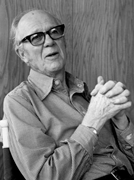 seek to understand. What is important is not what you think about them, but how they enlarge you.”
seek to understand. What is important is not what you think about them, but how they enlarge you.”
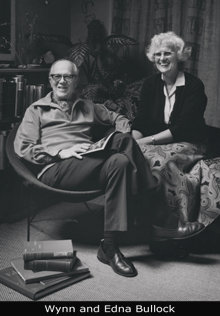 Wynn married Mary Elizabeth McCarty in 1925; the marriage ended in divorce in 1941. They had two children: Mary Wynne
(Mimi) (1930) and George (1935-1942). He married Edna Jeanette Earle in 1943 and they had two daughters: Barbara Ann (1945) and Lynne Marie (1953). Mimi, Edna, Barbara, and Lynne each appear in images made during the 1950s. A year after Wynn died in 1975, Edna took up photography and enjoyed a twenty-year career as an artist before she died in 1997. Barbara formed collaborative relationships with both her parents during their lifetimes and has written extensively on their work.
Wynn married Mary Elizabeth McCarty in 1925; the marriage ended in divorce in 1941. They had two children: Mary Wynne
(Mimi) (1930) and George (1935-1942). He married Edna Jeanette Earle in 1943 and they had two daughters: Barbara Ann (1945) and Lynne Marie (1953). Mimi, Edna, Barbara, and Lynne each appear in images made during the 1950s. A year after Wynn died in 1975, Edna took up photography and enjoyed a twenty-year career as an artist before she died in 1997. Barbara formed collaborative relationships with both her parents during their lifetimes and has written extensively on their work.